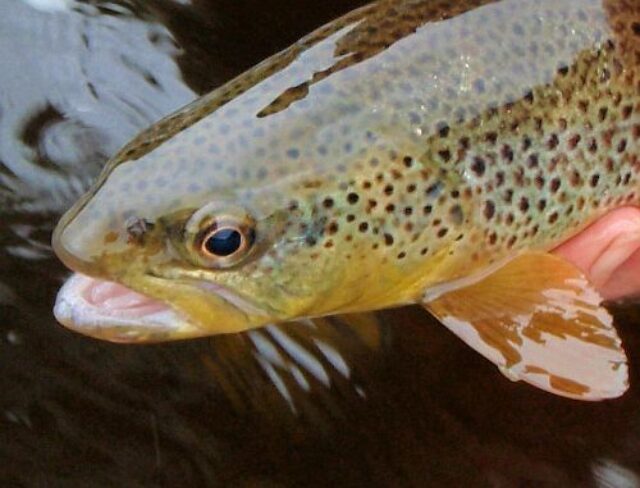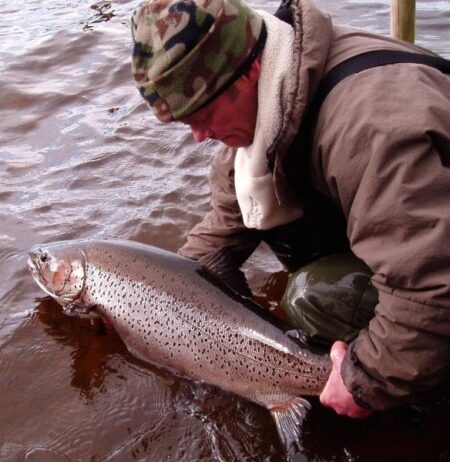13,000 years ago, most of the UK was covered in ice. As the ice retreated, trout from five distinct lineages spread from the rivers of Europe and started to take up residence in the new, ice free rivers in the UK. They were able to do this because brown trout can adapt to salt water and become sea trout. When they found suitable (empty) habitat, they stayed. Some retained their sea trout habits and continue to breed in rivers but feed at sea (they are, like salmon, anadromous). Others became resident brown trout. Over time, populations became separated or specialised and developed the genetic diversity we see today.
Brown trout have been domesticated by fish farmers both to provide food and for supplemental stocking for angling. Domesticated brown trout have been selected to grow quickly, spawn early and cope with the (for them) highly unnatural situation of being surrounded by other trout. They are different in appearance and behaviour to wild trout, but can interbreed with them. This is not desirable as their progeny are not as fit for life in the wild as truly wild trout. To understand more about the impact of stocking farmed fish, click here.
Rainbow trout are not native to the UK, but have been imported from America both for angling and food. They have not naturalised in the UK (we are not really sure why not), with the sole exception of the River Wye in Derbyshire where rainbow trout were introduced in the late nineteenth century and have bred successfully. The Wye now has both brown and rainbow trout.
This article, Darwin’s Trout by Jon Beer, Jon Beer explores why Salmo trutta, look and behave so differently.
The article appeared in Trout and Salmon magazine in 2022 and includes beautiful illustrations by James Prosek.










